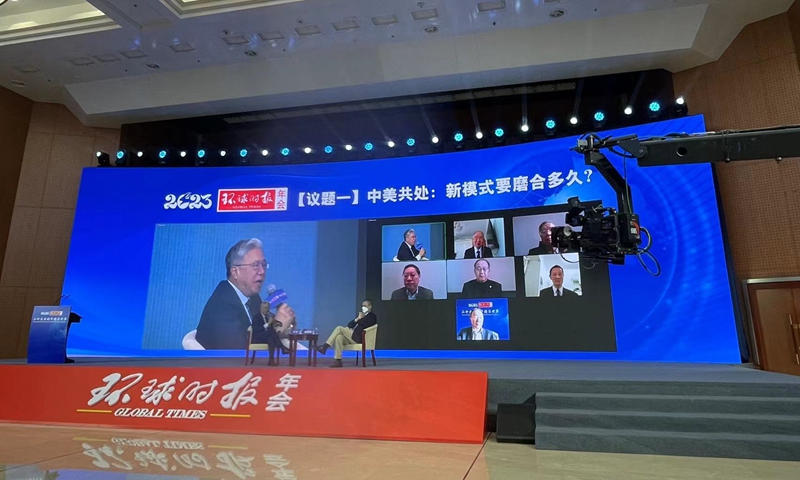People follow various diet fads, hoping to unlock the secret to weight management. — Photos:123rf.com
This diagram indicates the outcome of a dietary “chase”
(resulting in the “excess Calories”) from an initial inadequate to
a more optimal level of protein consumption.
How much protein a person needs depends on his lifestyle too. - 123rf.com Figuring out the right amount of protein we need could be the key to weight management.
MANY would have enjoyed the 15-day Chinese New Year season of bingeing on food and drink, and some would have added on a few spare kilos of weight as a result. My own Body Mass Index (BMI) is heading back towards 27 (again) which means I am significantly overweight (again) and this simply implies some immediate weight loss is needed.
At my advanced age, being overweight confers no momentous benefits, but can present several potential negatives, so weight control in such circumstances is quite important. And this is why a 2013 published study into a single wild female Chacma baboon named Stella in South Africa may be relevant.
Researchers from various anthropological and veterinary science institutes embarked on analysing in detail the food consumption of Stella over a 30-day window, breaking down her diet into the three macronutrients: carbohydrates, fats and proteins.
The study was done in South Africa in a region where there was a diverse range of foods available for baboons, and the original purpose was to establish if baboons can (a) regulate their intake of macronutrients, (b) cope with dietary restrictions, and, (c) establish a timescale for nutritional demands.
The data surprisingly indicated that Stella’s diet was driven primarily by the amount of protein eaten. Regardless of food availability, the ratio of calories from non-protein energy to energy from proteins was remarkably steady at 5:1, and this ratio was maintained every day. The wet mass of food varied considerably with an average of 1.9 kilos a day, and may fluctuate by 800 grams daily.
Stella’s average daily calorie intake was 940 calories, which varied up or down by 426 calories a day. The study found that the other two macronutrients, fats and carbohydrates were interchangeable with each other as far as Stella was concerned, and the overriding driver of total calories consumption was solely the amount of protein in Stella’s diet.
Protein leverage
The astonishing outcome of the study on Stella was actually predicted much earlier, by two Australian researchers, Simpson and Raubenheimer, in their 2005 paper, ‘Obesity: the protein leverage hypothesis’ where a simple mathematical model was presented which offered a plausible explanation for the global human obesity epidemic.
Summarised, the Protein Leverage Hypotheses (PLH) is simple. Like baboons, people eat to satisfy their need for protein, and they will eat potentially enormous amount of carbohydrates and fats until the food
eaten finally fulfills their protein requirement. And if people do not get enough protein, then they will simply eat more and more foods (which often contain carbohydrates and fats) in a forlorn quest for protein.
The body’s need for a relatively small amount of protein can therefore hugely “leverage” the consumption of other foods. And as such other foods contain more calories than proteins, the final result is often the accumulation of body fats resulting in obesity.
The obvious and significant difference between Stella and humans is that baboons appear able to restrict the overconsumption of fats and carbohydrates, even in the absence of protein. There may be several reasons for this. Perhaps there is a “protein switch” in baboons, or more probably, the range of foods available for baboons is simply limited, unlike for most humans.
Modern food production techniques use all sort of chemicals and flavouring compounds to mimic the texture and taste of protein-rich foods, resulting in processed foods that taste remarkably like proteins, but actually have very little or zero protein content. These foods have lots of cheap carbohydrates and fats instead, as protein is an expensive ingredient to include in processed foods.
Classic example are potato-based snacks and crisps, which come in all sorts of “meaty” flavours, even though there is usually no meat or protein content. According to the PLH, humans can easily consume many thousands of calories from meat-flavoured crisps in a futile attempt to satisfy the need for protein. Their taste senses will be fooled into erroneously provoking the consumption of such fake foods.
The amount of proteins needed by humans vary with age, with older people needing more protein content in their diets. And this includes both vegetable-based and animal sources of protein as there is little difference in the way the body processes proteins in general. Proteins are linkages of amino acids which the body disassemble into various smaller amino acids and molecules and recombine into other compounds to create enzymes, hormones and other tissues.
The main differences between animal and vegetable proteins are that meat proteins are considered “complete” proteins as they contain all 9 of the essential amino acids, and additionally they have some micronutrients (eg, certain minerals) which may not be present in plant proteins. However, these variances are easily resolved by adding or cooking/preparation with various added ingredients.
Our five appetites?
Leading from the PLH, where it seems that baboons and humans can detect the protein content of food, Simpson and Raubenheimer further proposed a theory that humans may actually have five different appetites, one each for protein, fat, carbohydrate, calcium and salt. Note that these are appetites which may reflect a physical need and not the same as taste sensors in the mouth, which are reflective of eating pleasures and displeasures.
There may be an element of truth involved, though the science is still unclear. Certainly, salt and some carbohydrates such as sugar can be detected by taste buds in the mouth. Fats can apparently be detected by specialised sensors in human digestive tracts, calcium may be detectable via a protein known as NCS-1 encoded by the FREQ gene in humans, and the real puzzle is how humans can detect proteins in the diet. Some papers have suggested that humans may have amino acid chemoreceptors, but it is far from clear that these receptors are involved in creating an “appetite” for protein as there are no neural linkages associated with these receptors.
Therefore, it is plausible that proteins are complex foods which require more processing for digestion and hence the lack of protein may be inferred by the body from the lack of digestive effort (and continued feeling of hunger) when insufficient protein has been ingested. We do not know for certain, even though the effect of humans eating inadequate amounts of proteins appears to be observable.
Regardless, of all the five appetites proposed, by far the most dominant appetite is for protein. The other may be in place to remind the body to also consume other macro- and micro-nutrients.
Too much protein is bad too
However, too much dietary protein can also be bad. The muchhyped keto diet is basically a meal plan comprising of primarily proteins and fats, which is quite odd, if one thinks about it.
Here is some simple maths. A gram of fat contains nine calories, a gram of sugar (carbohydrate) contains 4 calories, and protein is roughly the same as sugar. So if one wants to lose weight, it would make sense to ingest only proteins and carbohydrates, and skip the fats. However, the inclusion of carbohydrates would preclude the onset of ketosis, which is the phase when the body begins to burn stored body fat, instead of deriving energy from the carbohydrates.
This may be good for short-term weight loss, but it is also likely to have an effect on the kidneys because any diet too high in protein ends up building acid in the bodily fluids. This causes the kidneys to excrete the excess acid which is extracted using the calcium from the bones, resulting in excessive calcium loss.
The kidneys themselves may be damaged, especially if there is not enough water in the diet. There are also other side effects which can impact the liver and the heart, but it seems that the keto diet can work with healthy, younger adults, though it is probably less suitable for older people.
The right amount
Although it is a subjective matter, the amount of protein needed daily generally depends on physical activity and age. For a healthy adult, the minimum requirement is 0.8 grams per kilo of weight. So an adult weighing 70 kilos would need a minimum of 56 grams of protein daily. For younger, growing people and people who are more active, the requirement rises to 1 gram to 1.6 grams per kilo of body weight.
Older people, aged 65 or more, generally require around 50% more protein than someone younger, so an inactive pensioner should aim for 1.2 grams of protein per kilo of body weight, rising to perhaps 2 grams per kilo for a reasonably active pensioner.
Translated into food, 56 grams of protein is obtainable from around 200 to 250 grams of meat or fish, or 160 grams of dry soybeans.
Once the daily protein requirement is established, aim to consume the right amount of protein daily and vary the calories from the rest of food to a point where one feels comfortable, especially if the target is weight loss. One can also increase the daily protein amounts if hunger pangs persist. Cravings for overeating should be reduced once the right amount of protein has been found, according to the PLH.
By Curious cook CHRIS Chan - The views expressed here are entirely the writer’s own.
Source link
https://mystar.pressreader.com/search?query=OUR%20MANY%20APPETITES&in=ALL&hideSimilar=0&type=1&state=0
Related posts:






















